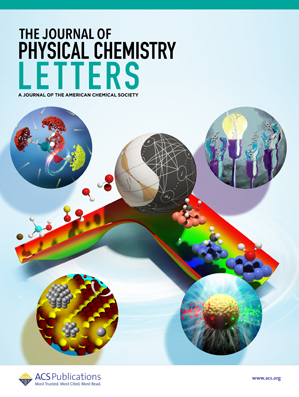Allegro-FM:迈向百亿亿次分子动力学模拟的等变基础模型
IF 4.8
2区 化学
Q2 CHEMISTRY, PHYSICAL
引用次数: 0
摘要
通过利用E(3)等变网络架构(Allegro)和一组由Total Energy Alignment框架合并的大规模有机和无机材料数据集,我们提出了一个百亿亿级分子动力学模拟的基础模型。所获得的模型(Allegro-FM)适用于不同下游任务的各种材料模拟,涵盖了训练集中的89个元素。Allegro-FM在描述结构、力学和热力学性质方面与高级量子化学理论表现出非常好的一致性,同时在结构相关性、反应动力学、机械强度、断裂和固/液溶解方面表现出新兴的能力,而这些都是模型尚未训练过的。此外,我们使用Transition1x证明了Allegro-FM对化学反应的强大可预测性和通用性。Transition1x包括数万个有机反应和960万个构型(包括过渡态数据),以及使用硅酸钙水合物作为测试平台的反应模拟。凭借其高效的计算,严格的本地网络架构,Allegro-FM扩展到数十亿原子系统,在Argonne领导计算设施的极光超级计算机上并行效率为0.975。这项工作中提出的方法展示了基于大规模原子模拟的新材料设计和发现的基础模型的潜力。本文章由计算机程序翻译,如有差异,请以英文原文为准。

Allegro-FM: Toward an Equivariant Foundation Model for Exascale Molecular Dynamics Simulations
We present a foundation model for exascale molecular dynamics simulations by leveraging an E(3) equivariant network architecture (Allegro) and a set of large-scale organic and inorganic materials data sets merged by the Total Energy Alignment framework. The obtained model (Allegro-FM) is versatile for various material simulations for diverse downstream tasks covering 89 elements in the training sets. Allegro-FM exhibits excellent agreement with high-level quantum chemistry theories in describing structural, mechanical, and thermodynamic properties, while exhibiting emergent capabilities for structural correlations, reaction kinetics, mechanical strengths, fracture, and solid/liquid dissolution, for which the model has not been trained. Furthermore, we demonstrate the robust predictability and generalizability of Allegro-FM for chemical reactions using Transition1x, which consists of tens of thousands of organic reactions and 9.6 million configurations including transition state data, in addition to reactive simulations using calcium silicate hydrates as a test bed. With its computationally efficient, strictly local network architecture, Allegro-FM scales up to multibillion-atom systems with a parallel efficiency of 0.975 on the exaflop/s Aurora supercomputer at Argonne Leadership Computing Facility. The approach presented in this work demonstrates the potential of the foundation model for novel materials design and discovery based on large-scale atomistic simulations.
求助全文
通过发布文献求助,成功后即可免费获取论文全文。
去求助
来源期刊

The Journal of Physical Chemistry Letters
CHEMISTRY, PHYSICAL-NANOSCIENCE & NANOTECHNOLOGY
CiteScore
9.60
自引率
7.00%
发文量
1519
审稿时长
1.6 months
期刊介绍:
The Journal of Physical Chemistry (JPC) Letters is devoted to reporting new and original experimental and theoretical basic research of interest to physical chemists, biophysical chemists, chemical physicists, physicists, material scientists, and engineers. An important criterion for acceptance is that the paper reports a significant scientific advance and/or physical insight such that rapid publication is essential. Two issues of JPC Letters are published each month.
 求助内容:
求助内容: 应助结果提醒方式:
应助结果提醒方式:


